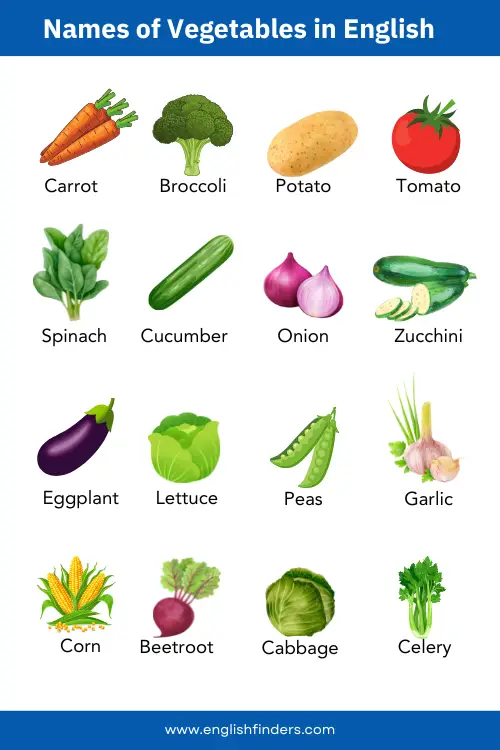Last updated on December 29th, 2024 at 10:52 am
When you go to the market or look in your fridge, do you ever wonder what all those vegetables are called in English? Well, you’re in the right place! Whether you’re a beginner or just curious, learning the names of vegetables can be super helpful to improve your vocabulary. Not only will it make you sound more natural when speaking English, but it’ll also be suitable when you’re shopping, cooking, or just talking about food.
In this lesson, we’ll walk you through 50 common names of vegetables, along with a brief description of each. You’ll learn the English names, and we’ll simply describe them so that you can easily understand and remember them.
50 Names Of Vegetables in English
Quick Navigation
Let’s dive into the 50 most common names of vegetables in English with their pictures.
1. Carrot

Carrots are bright orange vegetables that are crunchy when raw and soft when cooked. They have a sweet flavor and are great in salads, soups, or just as a snack. Carrots contain beta-carotene, fiber, vitamin K1, vitamin C, and antioxidants, which support eye health and boost your immune system.
2. Broccoli

Broccoli looks like a little tree with a thick stalk and green florets. It’s packed with nutrients and can be eaten steamed, roasted, or even raw. Broccoli is rich in vitamins C and K. These nutrients help strengthen your immune system and improve bone health.
3. Potato
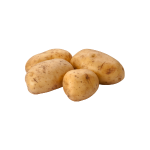
Potatoes are round or oval and come in many varieties. They can be mashed, fried, or boiled, and they’re one of the most popular vegetables around the world. Potatoes provide a good source of potassium, which helps maintain healthy blood pressure. They are also rich in fiber, especially when eaten with the skin, which promotes healthy digestion.
4. Tomato

Although technically a fruit, we often use tomatoes as vegetables. They are red and juicy, perfect for salads, sauces, or just eaten fresh. Tomatoes are loaded with lycopene, a powerful antioxidant that supports heart health and protects against certain types of cancer. Their high vitamin C, potassium, vitamin K, and folate content also boost our immune system.
5. Spinach

Spinach is a leafy green vegetable that’s rich in iron. We can eat this vegetable raw in salads or cooked in dishes like pasta or soups. Spinach is a powerhouse of iron, making it great for maintaining energy levels. It also contains antioxidants like lutein, which are beneficial for eye health.
6. Cucumber
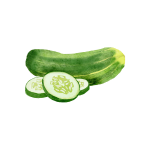
Cucumbers are long, green vegetables with a cool, refreshing taste. They’re great for salads or just eating plain as a snack. Cucumbers are incredibly hydrating due to their high water content. They also support healthy skin and can aid in weight loss by helping you feel full while being low in calories.
7. Onion
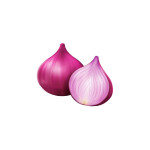
Onions are round and come in different colors like white, yellow, or red. They have a strong flavor when raw but become sweeter when cooked. Onions are known for their anti-inflammatory and antibacterial properties. Eating onions regularly can boost your immune system and improve heart health by lowering blood pressure and cholesterol.
8. Bell Pepper

Bell peppers come in different colors—green, red, yellow, and orange. They’re crunchy and slightly sweet, perfect for salads, stir-fries, or stuffing. Bell peppers are high in vitamins A and C, and fiber which help improve vision and strengthen your immune system. They are also low in calories, making them great for weight loss.
9. Zucchini
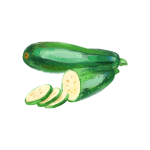
Zucchini is a green, cucumber-like vegetable that has a mild taste. You can cook it in many ways, like roasting, grilling, or even baking into bread. Zucchini is full of antioxidants, minerals, and fiber, which support digestive health. It’s also low in carbs and calories, making it an excellent choice for weight management.
10. Eggplant

Eggplants are purple and have a spongy texture. Many vegetable lovers use them in dishes like stews or grilled for a smoky flavor. Eggplants are rich in antioxidants that protect your cells from damage. They also contain fiber, which helps promote heart health by reducing cholesterol levels.
11. Cauliflower
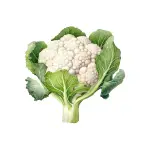
Cauliflower looks similar to broccoli but is white. It’s often steamed or roasted and is becoming popular as a substitute for rice or pizza crust. Cauliflower is high in fiber and vitamin C, vitamin K, which are great for digestion and energy production. It’s also a good source of antioxidants that protect against cancer.
12. Lettuce

Lettuce is a leafy vegetable sometimes used in salads. It’s light and crunchy, making it perfect as a fresh base for many dishes. Lettuce provides a low-calorie source of vitamins A and K, which support healthy skin and strong bones. It’s also hydrating due to its high water content.
13. Peas

Peas are small, round, and green. They come in pods and can be eaten fresh or cooked in soups, salads, or as a side dish. Peas are an excellent source of plant-based protein and fiber. They help regulate blood sugar levels and support heart health.
14. Garlic
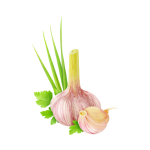
Garlic is a small, bulb-like vegetable with a strong, pungent flavor. Many housewives use them to add flavor to many dishes, whether raw or cooked. Garlic is famous for its immune-boosting properties. It contains compounds that can help lower blood pressure and reduce the risk of heart disease.
15. Corn

Corn comes in yellow kernels on a cob. It’s sweet and can be grilled, boiled, or used in salads, soups, and many other dishes. It is rich in fiber and B vitamins, which are essential for energy production. It also contains antioxidants like lutein that promote eye health.
16. Asparagus

Asparagus is a long, green vegetable with tender stalks. It has a slightly bitter taste and is delicious when roasted or grilled with a bit of olive oil. It is a great source of vitamins A, C, K, and folate, which supports healthy cell growth. Asparagus also helps detoxify the body by acting as a natural diuretic, removing excess fluids.
17. Beetroot
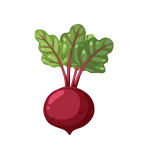
Beetroot, or simply beets, are deep red or purple and have an earthy, slightly sweet taste. They’re often roasted, boiled, or added to salads for a splash of color. It boosts endurance and lowers blood pressure thanks to its high nitrate content. It’s also packed with antioxidants that help fight inflammation.
18. Cabbage
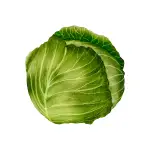
Cabbage is a round, leafy vegetable that comes in green or purple varieties. It’s crunchy, and we can use them in salads, stir-fries, or soups. Cabbage is high in vitamin C, fiber, and potassium which support immune health and digestion. It also contains compounds that may reduce the risk of cancer.
19. Brussels Sprouts
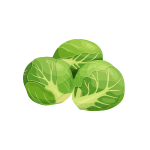
These small, round vegetables look like tiny cabbages. Brussels sprouts taste slightly bitter but are delicious when roasted or sautéed. They are full of vitamins C and K, which promote strong immunity and healthy bones. They also contain antioxidants that protect your cells from damage.
20. Kale
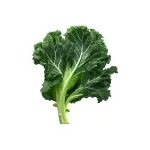
Kale is a leafy green vegetable that’s full of nutrients. It’s often used in salads, smoothies, or baked into crispy kale chips. Kale is one of the most nutrient-dense vegetables, loaded with vitamins A, C, and K and antioxidants. It’s excellent for boosting immune health and improving heart function.
21. Sweet Potato

Sweet potatoes are orange on the inside and have a sweet, rich flavor. They can be baked, roasted, or mashed and are often used as a healthier alternative to regular potatoes. They are rich in beta-carotene, vitamin C, fiber, and zinc which is good for your skin and eyes. Their high fiber content also helps regulate blood sugar levels.
22. Radish

Radishes are small, round, and usually red on the outside with a crisp white interior. They have a peppery flavor and are great in salads. Radishes are low in calories but high in vitamin C, which strengthens your immune system. They also help us improve digestion and lower blood pressure due to their fiber content.
23. Celery
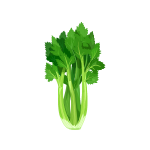
Celery has long, green stalks with a mild, fresh flavor. It’s often eaten raw with dips or added to soups for extra crunch. Celery is known for its anti-inflammatory properties. It helps you improve digestion and supports heart health by lowering cholesterol levels. It also contains antioxidants, minerals, and vitamin K.
24. Leek

Leeks are part of the onion family but have a milder taste. They are long and green with a white base, often used in soups and stews. Leeks are high in vitamins A and C, which help support the immune system and improve skin health. They also contain antioxidants that protect against chronic diseases.
25. Butternut Squash

Butternut squash has a sweet, nutty flavor and a creamy orange flesh. It’s perfect for soups, roasting, or even pureeing into a sauce. It is full of vitamins A and C, potassium, and magnesium, which help maintain healthy vision and boost the immune system. It’s also great for digestion due to its high fiber content.
26. Pumpkin

Pumpkins are large, orange vegetables known for their sweet and earthy flavor. Just like others, many of my friends use them in soups, pies, or roasted as a side dish. They are rich in beta-carotene, which supports eye health and boosts the immune system. They also help maintain a healthy heart by lowering blood pressure.
27. Okra

Okra is a green, finger-like vegetable with a slimy texture when cooked. It’s popular in stews and curries, especially in dishes like gumbo. It is an excellent source of fiber, which helps improve digestion and control blood sugar levels. It also contains antioxidants and vitamin C that protect against inflammation.
28. Artichoke
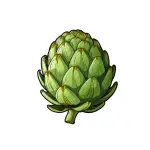
Artichokes have tough, green leaves and a soft heart. The edible parts are delicious when steamed or roasted, often eaten with butter or dip. Artichokes are high in fiber and antioxidants, making them great for digestion and liver health. They can also help lower cholesterol levels.
29. Turnip
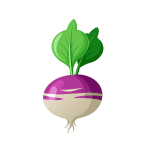
Turnips are round, white, and purple vegetables with a slightly bitter taste. They can be roasted, mashed, or added to soups. Turnips are a good source of vitamin C, fiber, and antioxidants, which support immune health. They also contain compounds that may reduce the risk of cancer.
30. Parsnip

Parsnips look like white carrots and have a sweet, earthy flavor. They’re perfect for roasting or adding to stews for a touch of sweetness. They are rich in fiber and folate, which are beneficial for heart health and energy production. They also contain antioxidants that help us to fight against inflammation.
31. Green Beans
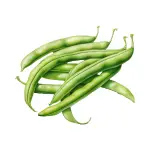
Green beans are long and thin, with a mild, slightly sweet flavor. They can be steamed, sautéed, or added to casseroles. Green beans are a low-calorie vegetable high in vitamins A, C, and K. They support eye health, boost immunity, and strengthen bones.
32. Bok Choy

Bok choy is a Chinese cabbage with crisp white stalks and dark green leaves. We commonly use them in stir-fries and soups. Bok choy is full of vitamins A and C, which are essential for immune health and vision. It’s also rich in iron and calcium, which supports strong bones.
33. Fennel
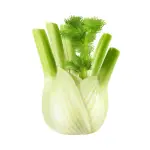
Fennel has a bulb-like base with feathery green leaves. It has a mild, licorice-like flavor and can be eaten raw in salads or roasted. Fennel is high in fiber, promotes digestion, and contains vitamin C for immune support. It’s also known to help reduce inflammation.
34. Chili Pepper

Chili peppers are small, spicy vegetables that come in various colors like red, green, and yellow. They add heat to dishes like curries, sauces, and salsas. Chili peppers contain capsaicin, which helps boost metabolism and may reduce pain. They’re also rich in vitamin C, supporting your immune system. Further, they reduce the risk of type 2 diabetes.
35. Mushroom

Mushrooms are fungi, but they’re often treated like vegetables in cooking. They come in different shapes and sizes, with a savory, earthy flavor. Mushrooms are a great source of B vitamins, protein, and antioxidants that support brain function and immune health. They also provide selenium, an essential mineral.
36. Snow Peas

Snow peas are flat, green pods with small peas inside. They have a sweet, crisp taste and are often used in stir-fries or eaten raw in salads. Snow peas are rich in fiber and vitamins A, and C, supporting digestion and immunity. They are also low in calories, making them a healthy snack option.
37. Shallot

Shallots are small, bulb-like vegetables similar to onions but with a milder, sweeter taste. They’re great for adding subtle flavor to sauces and dressings. Shallots are packed with antioxidants, which help reduce inflammation and support heart health. They also contain vitamin C for immunity.
38. Watercress
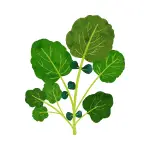
Watercress is a leafy green vegetable with a slightly peppery taste. It’s one of my favorites and I use it in salads and as a garnish. Watercress is high in vitamins A and C, which help boost immunity and improve skin health. It’s also known for its high antioxidant content.
39. Swiss Chard

Swiss chard is a leafy green with colorful stems ranging from red to yellow. It has a mild, slightly bitter taste and is great in soups, stews, or sautéed. Swiss chard provides vitamins A, C, and K, supporting vision, skin health, and strong bones. It also contains magnesium, which is important for muscle function.
40. Yam

Yams are starchy root vegetables similar to sweet potatoes but less sweet. They’re boiled, baked, or mashed in savory dishes. Yams are rich in potassium, which helps regulate blood pressure, and vitamin C, which boosts your immune system.
41. Collard Greens

Collard greens are large, dark green leaves with a slightly bitter taste. They’re usually boiled or sautéed with garlic and other seasonings. Collard greens are high in fiber and vitamins A and K, supporting digestive health and bone strength. They’re also rich in antioxidants.
42. Endive
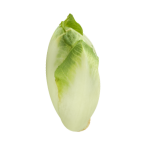
Endive is a leafy vegetable with slightly bitter, crisp leaves. It’s often used in salads or as a base for appetizers. Endive is low in calories and high in fiber, promoting healthy digestion. It’s also rich in vitamin K, antioxidants, and potassium which supports bone health.
43. Radicchio

Radicchio is a purple-red leafy vegetable with a slightly bitter taste. It adds a pop of color and flavor to salads or can be grilled. Radicchio is rich in vitamins A and K, promoting healthy skin and bones. It also contains antioxidants that help reduce inflammation.
44. Kohlrabi

Kohlrabi is a round, bulb-like vegetable that’s crunchy and mildly sweet. It can be eaten raw in salads or cooked in stir-fries. Kohlrabi is high in fiber, supports digestion, and contains vitamin C for immune support. It’s also rich in potassium.
45. Rutabaga
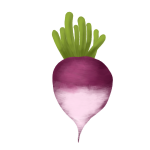
Rutabagas are large, round root vegetables that are a cross between a cabbage and a turnip. They have a mild, sweet flavor and are great for roasting or mashing. Rutabagas are rich in fiber and vitamin C, supporting digestive health and immunity. They also provide potassium, which helps regulate blood pressure.
46. Taro

Taro is a starchy root vegetable with a slightly nutty flavor. It’s often used in soups, stews, or fried into chips. Taro is high in fiber, supports healthy digestion, and provides potassium for heart health. It’s also a good source of vitamin E, an antioxidant.
47. Chayote

Chayote is a green, pear-shaped vegetable with a mild taste and crisp texture. It’s used in stir-fries, soups, or eaten raw in salads. Chayote is low in calories but high in fiber, making it great for digestion. It’s also rich in vitamin C and zinc, which helps boost your immune system.
48. Bitter Melon

Bitter melon is a bumpy, green vegetable with a strong, bitter taste. It’s commonly used in Asian cooking, especially in stir-fries and soups. It helps us lower blood sugar levels and supports heart health. It’s also packed with antioxidants that reduce inflammation.
49. Jicama
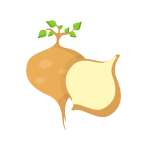
Jicama is a root vegetable with a crunchy, juicy texture and a slightly sweet flavor. It’s usually eaten raw in salads or as a snack. Jicama is low in calories but high in fiber and water, making it great for weight loss and digestion. It’s also a good source of antioxidants and vitamin C.
50. Horseradish

Horseradish is a root vegetable with a strong, spicy flavor. It’s grated and used as a condiment to add heat to roast beef dishes. It contains antioxidants that help fight inflammation and support heart health. It also contains compounds that may help with digestion.
Wrap Up
Learning the names of different vegetables is a great way to expand your vocabulary and improve your English skills. Each vegetable has its own unique taste, texture, and health benefits, making them important parts of a healthy diet. I hope this list has helped you familiarize yourself with these everyday vegetables. Now, the next time you see them at the store or in a recipe, you’ll know exactly what they are!
Frequently Asked Questions
Why is it important to learn the names of vegetables in English?
Learning the names of vegetables in English helps you understand recipes, communicate better when shopping for groceries, and build your vocabulary, which improves your overall language skills.
What are some easy ways to remember vegetable names?
You can remember vegetable names by using flashcards, labeling vegetables at home, or practicing with friends and family. Also, try to use them in sentences, like “I ate broccoli for lunch,” to make them stick in your memory.
How can I practice using these vegetable names in real-life situations?
You can practice by naming vegetables when you go grocery shopping, reading English recipes, or talking about your meals with friends. You can even try cooking a recipe and describing each vegetable you use.

Azizul Hakim is the founder & CEO of englishfinders.com. He is a passionate writer, English instructor, and content creator. He has completed his graduation and post-graduation in English language and literature.

